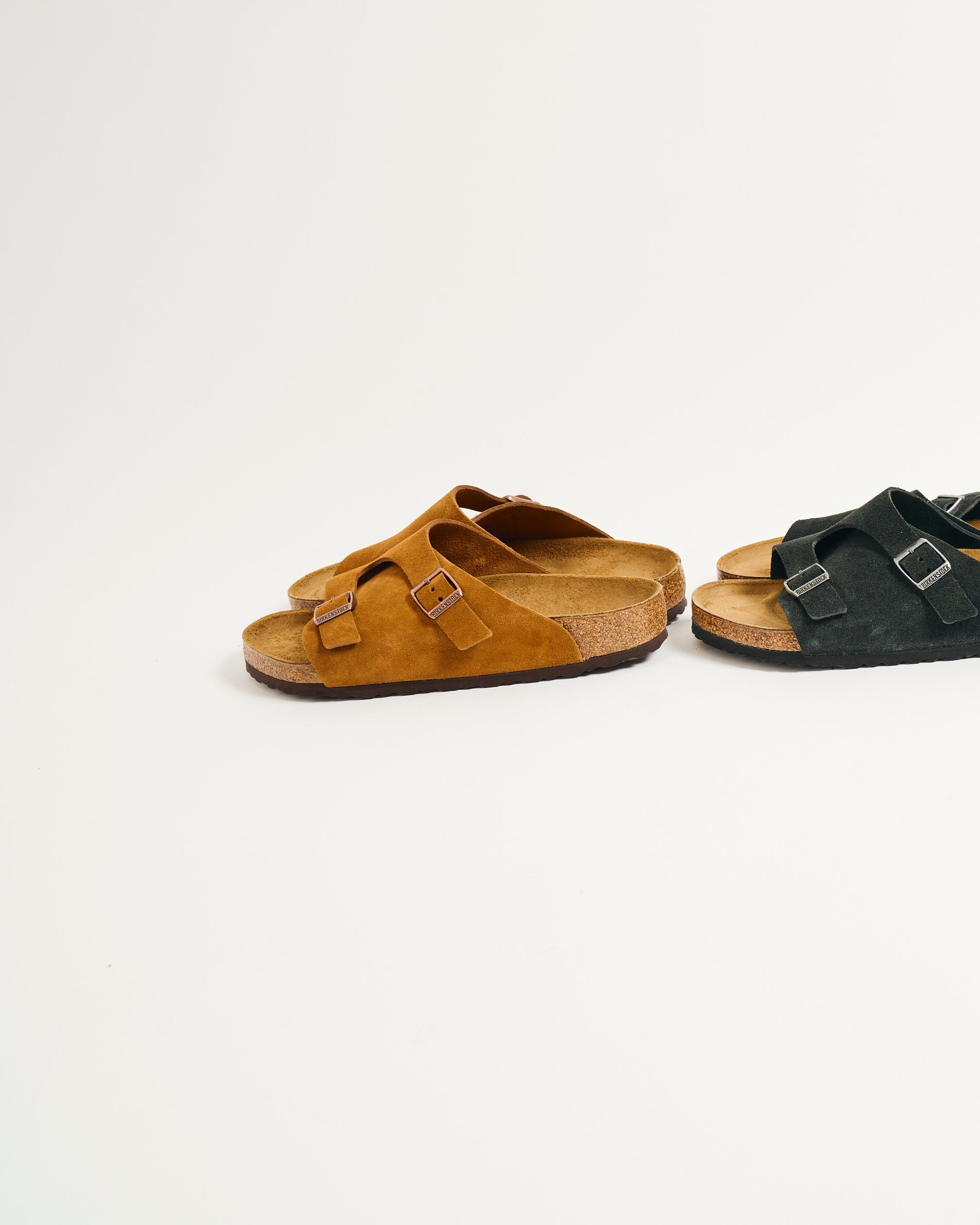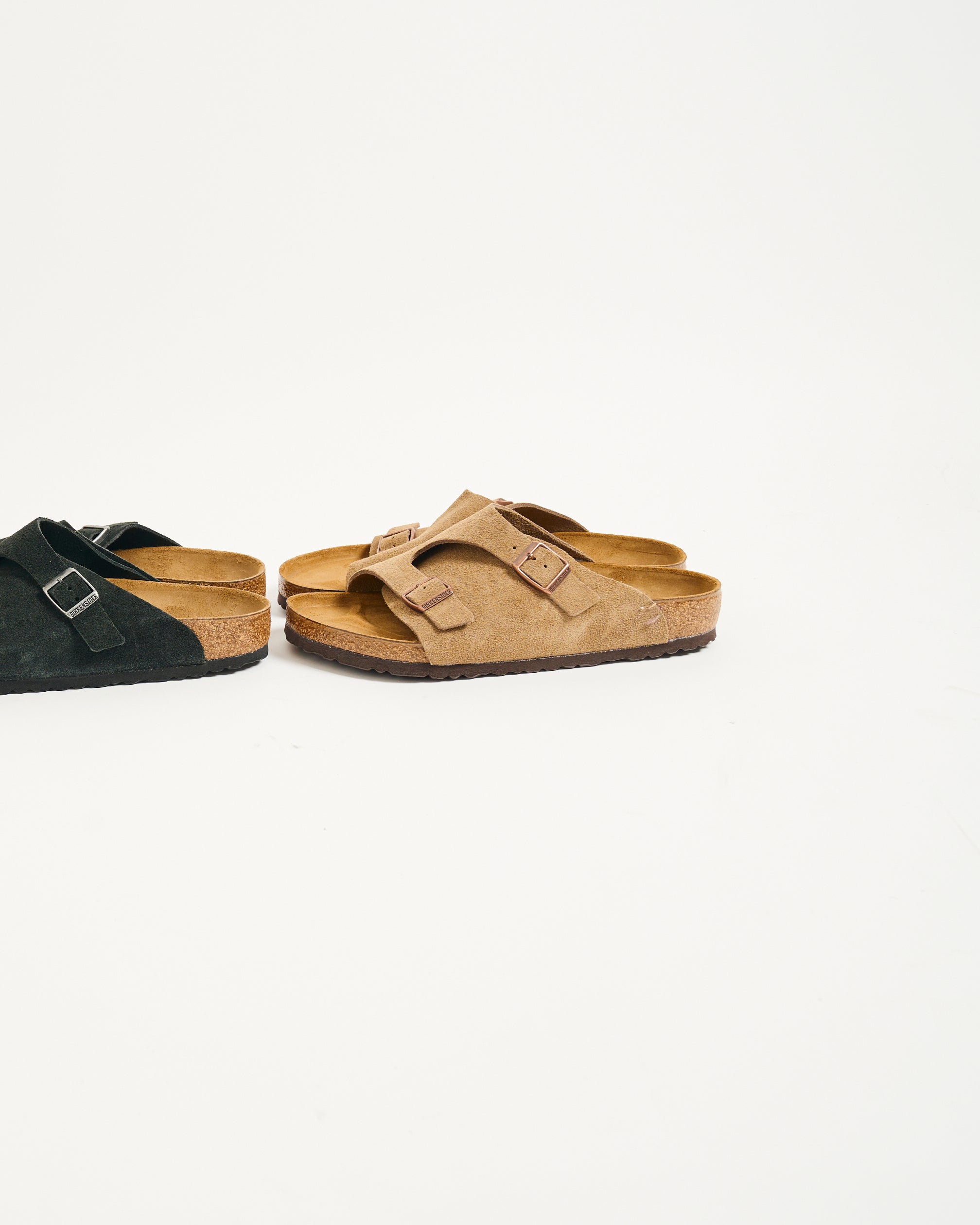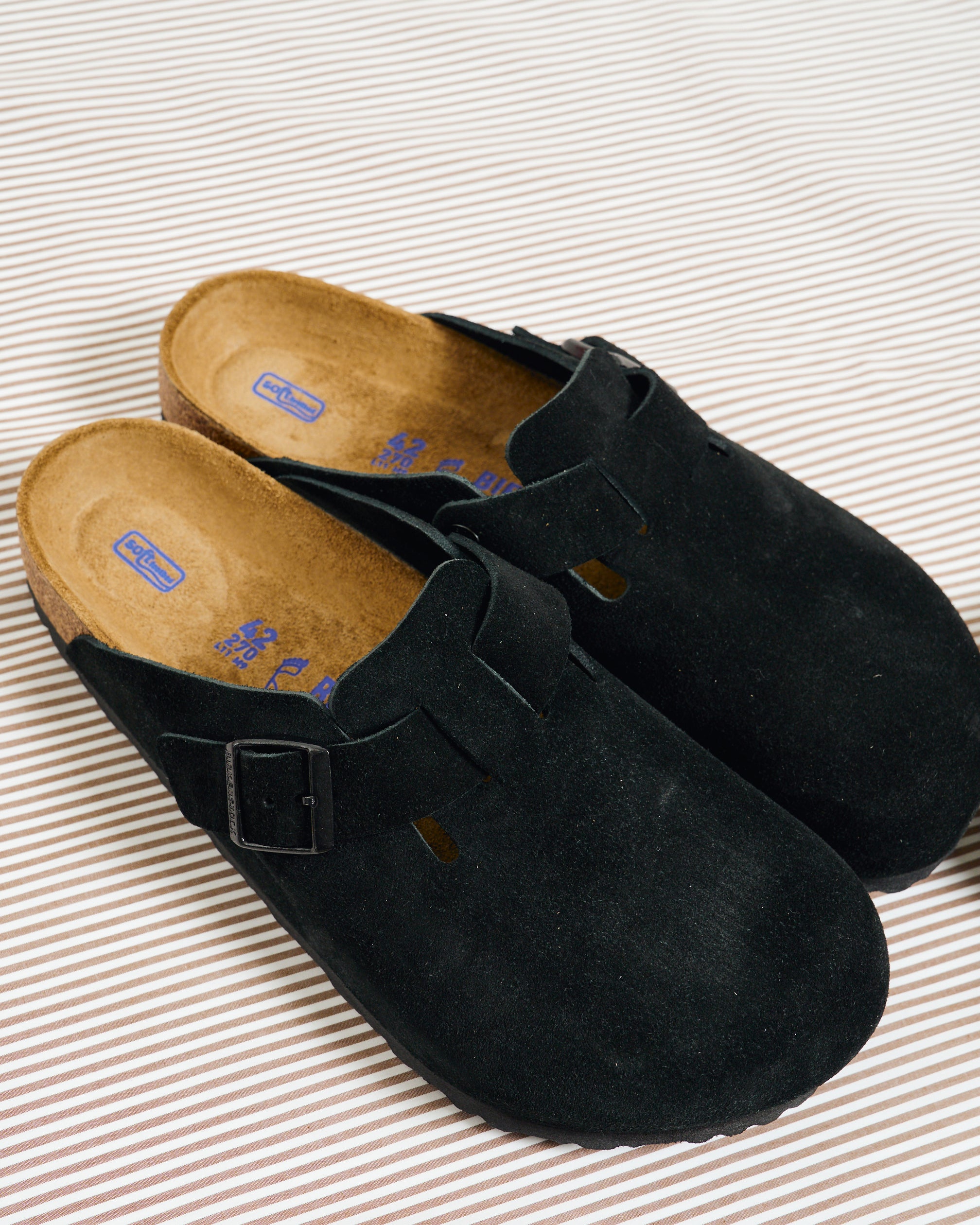Restock - Birkenstock
A restock of Birkenstock footwear is available at Nepenthes New York, available in-store and online at nepenthesny.com


Zürich
The Zürich model, introduced by Karl Birkenstock in the fall of 1964 at the Foot and Shoe Trade Fair in Hamburg, features an expansive upper that nearly envelops the entire foot, maintaining the brand's characteristic brutalist aesthetic. Its unique design and comfortable footbed gained popularity among both countercultural protestors and those seeking orthopedic footwear.
Boston
In 1976, Birkenstock unveiled the 'Boston,' a cork clog designed to provide the comfort of the Birkenstock footbed during the colder months. Unlike the heavier, rigid wooden styles of the time, the Boston is lightweight and flexible. Its minimalist, closed-toe design makes it versatile for both indoor and outdoor use, as well as for work and leisure. This model also features a soft footbed with a padded foam insert for comfort.


Kyoto
The Kyoto, released in 2020, updates the Zürich model, replacing the two buckle straps with a hook and loop closure for a more modern look. The footbed technology remains unchanged, featuring an anatomically shaped cork footbed for unparalleled comfort.






About Birkenstock
Founded by a German cobbler in Langen-Bergheim in 1774, Birkenstock only gained widespread prominence nearly 100 years later as the creator of the contoured insole, launching the product in 1902. Over the following decades, the company remained devoted to developing orthopedic insoles, coining the term "footbed" while only prototyping a handful of closed-toe shoes.
In 1963, the company transitioned to footwear and—retaining its sole focus on ergonomics—created the world's first flexible footbed sandal, a model later dubbed the "Madrid." Refusing to sacrifice function for fashion, the model initially sold poorly. Birkenstock salvaged performance by sending samples to podiatrists nationwide and marketing it as orthopedic.
Ironically, the company's refusal to cater to the fashion world led to breakthrough success. Progressive youth who supported eco-friendly lifestyles adopted Birkenstock sandals as a countercultural exercise. Further success came in 1966 when American tourist Margot Fraser purchased a pair while visiting Germany and convinced the company to begin exports to the United States. Rather than distribute the sandals to shoe stores, Fraser marketed the Birkenstocks to Bay Area health-food stores, where the granola-eating American hippies snatched them up.
Little has changed since the 1960s. CEO Oliver Reichart remarks, "We're the only 'fashion' brand not defined by fashion. We do not chase trends. Trends come and go, but truly great things last forever." The company still focuses on quality and comfort, sourcing cork from Portugal and leather from Italy and making each pair in Germany. Despite a handful of high-profile collaborations, their goods are still a delivery system for the Birkenstock footbed, as they aim to provide ergonomic comfort to all.
The brand's perspective aligns with the Nepenthes ethos - eschewing short-term trends in favor of a unique vision that withstands the test of time.
